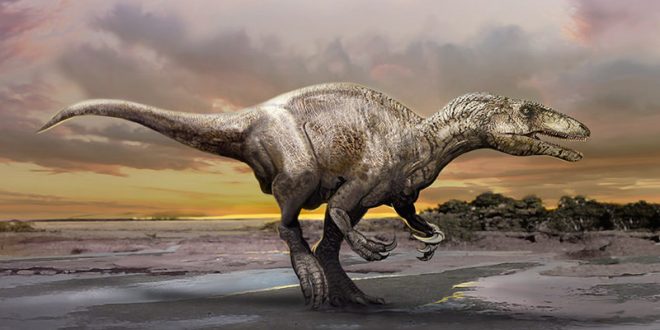Researchers have dug up a new species of dinosaur in Argentina that holds clues to the mysterious megaraptors, a carnivorous group of animals that defies easy categorization. The species was named Murusraptor barrosaensis, and is described for the first time in an article published Wednesday in PLOS ONE.
Megaraptorid dinosaurs are medium-sized and walk on two legs. They’re characterised by large claws and bird-like features. The name “Megaraptor” translates to “giant thief” – a reference to their carnivorous ways.
The clad includes Megaraptor from modern-day South America, as well as Australian dinosaurs Rapator and Australovenator, among others.
The family’s newest addition, Murusraptor, was discovered in Sierra Barrosa, in the fossil-rich Patagonian region of Argentina. Murus is Latin for “wall” and refers to the location of the fossil, in the side of a sandy canyon in 80-million-year-old rocks.
“Although incomplete, the beautifully preserved bones of Murusraptor unveil unknown information about the skeletal anatomy of megaraptors, a highly specialised group of Mesozoic predators,” says Rodolfo Coria from Argentina’s National Scientific and Technical Research Council and co-author of the paper.
The fossil, which included a significant portion of skull, 31 teeth, pelvis and tibia, belonged to an immature dinosaur, but the new species appears to be bigger than its cousin Megaraptor.
Murusraptor bears unique facial features in the details of its bone structure as compared to other Megaraptorid dinosaurs, as well as differently-shaped hip bones.
The researchers say the discovery could contribute to questions that still surround the Megaraptorid clan, including its positioning among the wider theropod group.
Agencies/Canadajournal
 Canada Journal – News of the World Articles and videos to bring you the biggest Canadian news stories from across the country every day
Canada Journal – News of the World Articles and videos to bring you the biggest Canadian news stories from across the country every day



